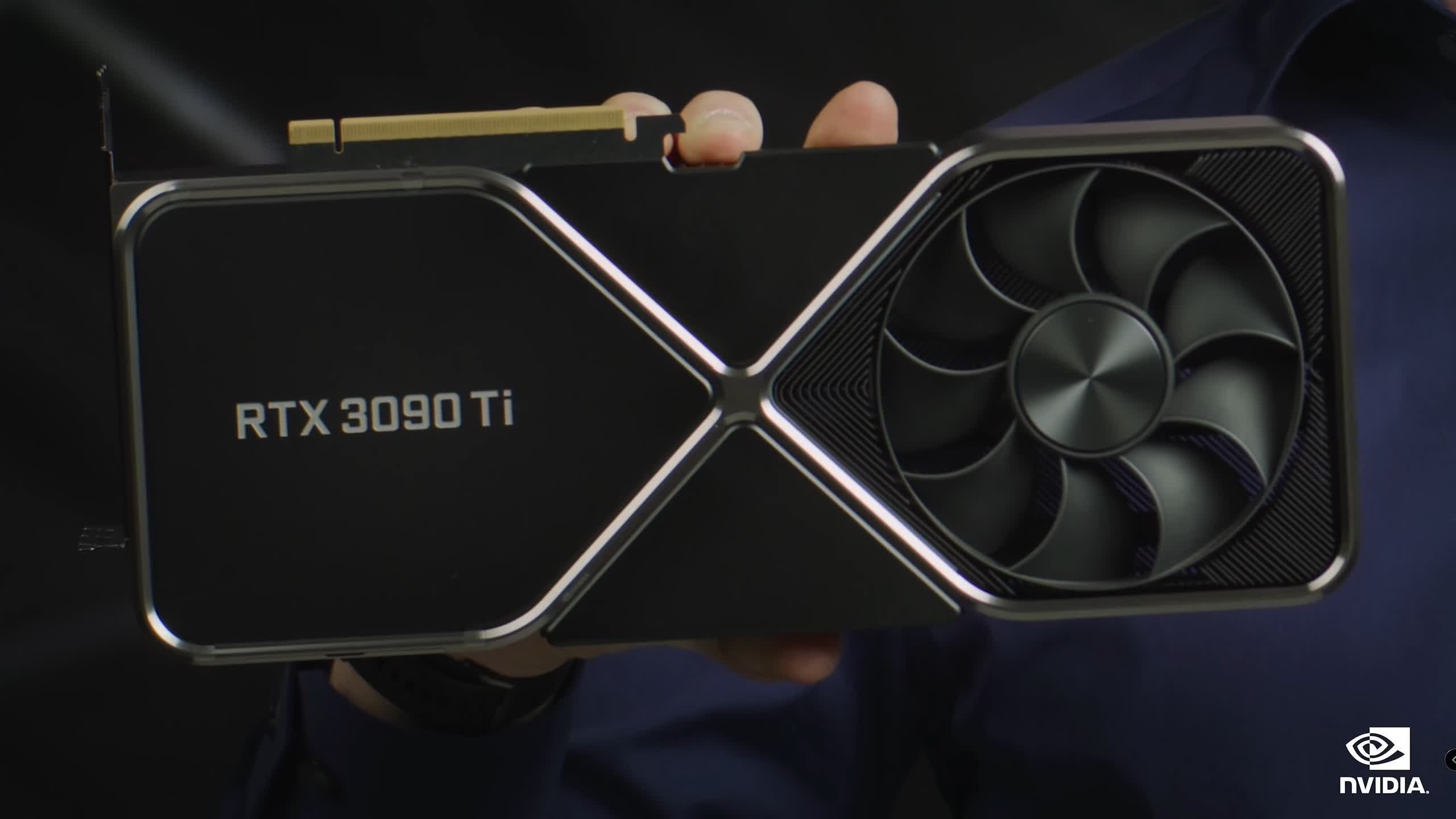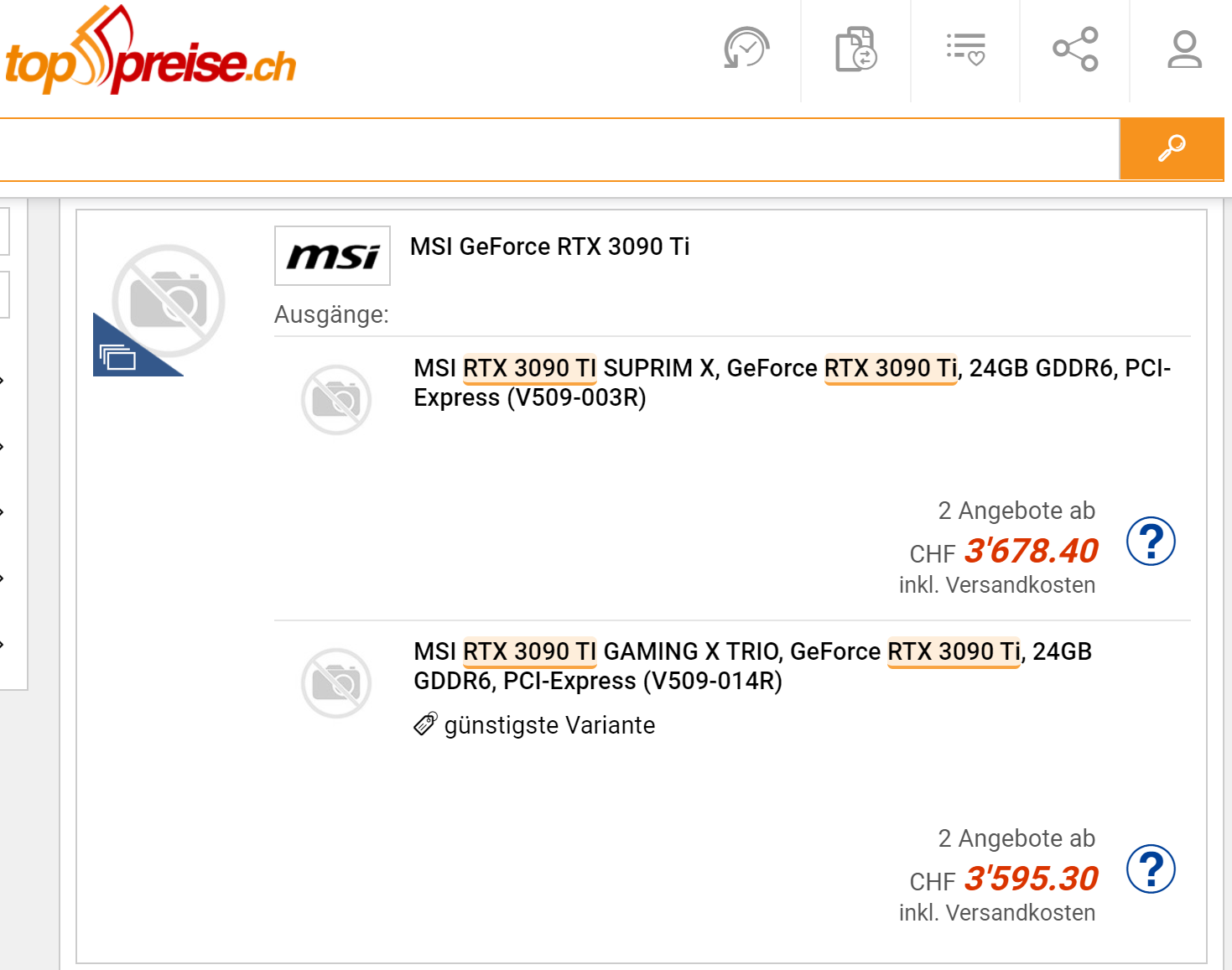Why it matters: Nvidia gave us little more than a glimpse of its upcoming RTX 3090 Ti at virtual CES earlier this month, but it appears that the first pre-sale listings for custom versions have appeared on a European retailer’s website. Unfortunately, but not unsurprisingly, the prices are high. Very high.

Two RTX 3090 Ti cards from MSI have been spotted on the somewhat ironically named Swiss site Top Preise. The MSI GeForce RTX 3090 Ti Gaming X Trio and the MSI GeForce RTX 3090 Ti Suprim X are listed at CHF 3,595, the equivalent of around $3,932, and CHF 3,678 (~$4,022), respectively.
In normal times, those numbers would be considered placeholder prices. But these are far from normal times. If they are accurate, it means these RTX 3090 Ti models will sell for 40% to 66% more than what their RTX 3090 equivalents sell for on the site, which is a big difference considering the former isn’t expected to offer a massive performance boost over the latter.
Nvidia said it would reveal more details about the RTX 3090 Ti later this month. Company SVP Jeff Fisher said the card would offer 40 shader teraflops, 78 RT teraflops, and 320 tensor teraflops of performance, outpacing the vanilla RTX 3090’s 36 shader teraflops, 69 RT teraflops, and 285 tensor teraflops. The new flagship will also have 24GB of GDDR6X memory running at 21Gb/s, up from 19.5Gb/s on the 3090
The potential price reveal comes a couple of days after rumors that Nvidia requested all its board partners temporarily halt their production of custom RTX 3090 Ti products due to hardware and firmware issues with the cards. Moreover, Nvidia has reportedly pushed back a complete reveal embargo set for last week, and it has not provided a new date.
In related news, Nvidia last week said (again) that it expects to increase the supply of its graphics cards in the second half of this year, likely to coincide with the release of the RTX 4000 ‘Lovelace’ series. Just how much that will help overall prices and availability remains to be seen.
h/t: VideoCardz, Tom's Hardware
https://www.techspot.com/news/93010-custom-rtx-3090-ti-cards-priced-over-4000.html
